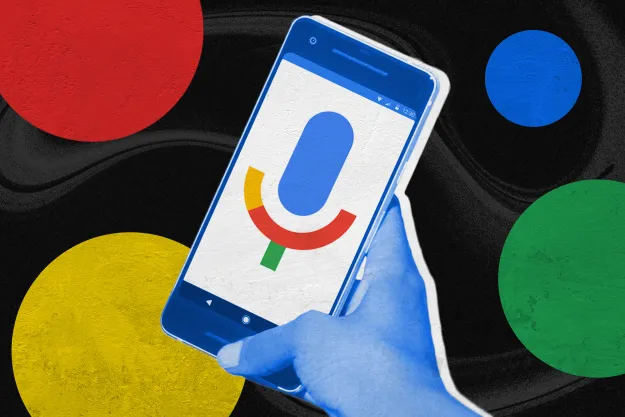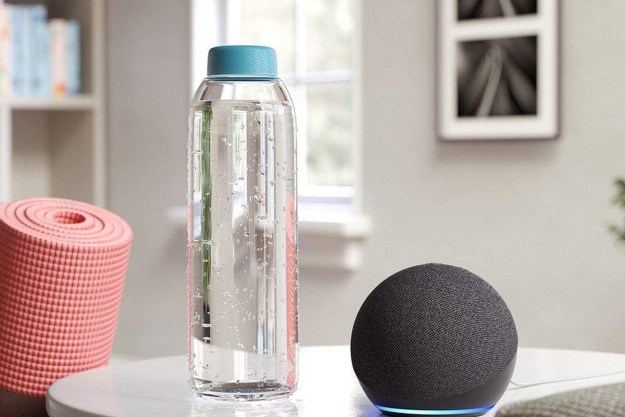
Nonetheless, many Google Home owners still believe that, in the long run, Google Home will prove to be a more robust platform than Alexa. Interest rose considerably in the device when Google launched Actions, a platform that allows third-party developers to create reply-based actions via Google Assistant, which is the engine that drives the smart speaker. It’s a welcome change for a company that has long rejected Apple’s “walled garden” approach to app development.
When it comes to using the device, there are still a lot of things it can’t do, sadly. But it’s learning. Here are just a few of Google Home’s most useful skills.
Get personal
Recently, Google Home got a major upgrade with the ability to distinguish between multiple voices. Why is that a game-changer? Before, you could only link a single account, meaning the user’s partner, kids, or roommate couldn’t ask the device for their calendar info or traffic conditions for their commute. Though it’s still lagging behind Alexa when it comes to being able to use more than just Google’s default calendar, the voice-recognition aspect is definitely a step-up compared to Amazon’s devices.
To set up multiple accounts, open the Google Home app, and tap the card that says “Multi-user is available.” Click “Link your account,” then teach the Google Assistant to recognize your voice by saying short phrases like, “OK Google,” and “Hey, Google. You can add up to six different accounts, and the
Automate your life with Tasker, Todoist, IFTTT, Wonder, and AutoVoice
If you took a brain scan of any Google-minded developer in December, you’d see their synapses firing up to connect the dots. One of the most useful facets of Google Home is its ability to pair with other tools, applets, and apps, which allows you to create custom commands for a variety of tasks. It’s also easy to find tutorials that demonstrate how to use the free applet creation software, IFTTT (If This, Then That), to create custom commands that can then be integrated into Google Assistant’s Tasker productivity app (Android, $3) or AutoVoice, a useful Tasker plugin. Just glancing at the Google applets will reveal a medley of skills, some of which will allow you to track your work hours in Google Calendar or back up your texts to a Google spreadsheet.
AutoVoice lets you create voice commands that trigger different responses from Google Home. Setup and getting started takes a bit of work and practice, but the results are worth it. You will need an Android device, though.
IFTTT and Tasker offer great workarounds for things Google Home can’t do on its own yet, but the speaker does have some native capabilities. Unlike with Alexa,
Stream music and video via Google Home

In the age of iTunes, Spotify, and Shazam, playing music might seem like a basic application for Google Home, but it really is a fundamental application for the platform. Thankfully, Google put some thought into its music partnerships, so this function was one of the most stable and robust applications on the platform at launch. The product works seamlessly with Google Play Music, Pandora, Spotify, and iHeart Radio, among other streaming platforms. You can link up several Homes and Chromecast devices to create multi-room audio, as well.
The Home’s controls are also fairly intuitive; just tap the top of the device to pause a broadcast, and tap again to resume play. Naturally, these features also apply to video services such as Netflix and YouTube. You can use Chromecast to have Google Home put up a Netflix series or YouTube video on your TV.
More ways to make Google Home work for you:
Manage your home’s IoT devices
It’s no secret that controlling your home’s nifty IoT devices is a primary application for Google Home — that is, if IoT devices don’t kill us all first. That said, the variety and flexibility of the platform is still limited. Obviously Google can control Nest thermostats, but the company also partnered with Philips, so your speaker can turn on your Hue smart lights. Honeywell, Belkin, and SmartThings also have some compatible products, but it will be awhile before the Home catches up to Alexa in this department.
Plan your day and be better informed

With a little research and training, it’s possible to use Google Home as a personal assistant. With the right combination of commands, you can warm up your home, start the coffee maker, and get a read on traffic and your upcoming appointments before having
With “My Day” (go to Devices, Settings, More, My Day), you can get weather, information about your work commute, reminders, and the time of your next meeting when you ask Google Home, “Tell me about my day.” Say “Listen to the news” to get information from your preferred sources (go to Devices, Settings, More, News).
Ask questions
It’s an interesting exercise to push the envelope of Google Assistant’s search capabilities. Some of the basic commands are, well, basic. You can ask Google Home what something is, how to spell a word, and ask it what a given animal sounds like. But some of the search functions get a lot more esoteric, like finding out what other films an actor was in and where to stream them, or even to roll a 12-sided die or flip a coin. You may not realize how many skills the Home has, unless you’ve explored the app thoroughly. Go to Devices, Settings, More, Services, and you’ll see the included skills. Food Network, Kayak, Lonely Planet, San Francisco transit, and others have skills you access by asking
Get a pronunciation lesson
You can ask Google Home to translate words and phrases into a variety of languages, from German to Spanish to French. Unfortunately, it only supports English as its main language at the moment, though.
Have Google Home give you a laugh or two
From the whimsical “Google Doodle” to the integrated “Zerg Rush” game, Google has lent a sly sense of humor to all its platforms and this extends to the Home and Google Assistant. It’s not a surprise, either, since it was recently revealed that Google employed writers from both Pixar and The Onion to help build a personality into the assistant. When you get frustrated with Google AI (and you will), it’s important to remember that Google is playing the long game. The company eventually wants Google Home to develop an emotional rapport with its users.
Because of this, you can play games such as Crystal Ball and Mad Libs, or explore the Easter eggs that many users have already discovered. Here’s a serious and contemplative list of questions to get you started:
- “Hey Google, I am your father.”
- “Ok, Google, are you SkyNet?”
- “Hey Google, sing a song.”
- “Hey Google, set phasers to kill.”
- “Hey Google, how old are you?”
- “Ok Google, what is the loneliest number?”
- “Ok Google, here comes dat boi.”
- “Hey Google, did you fart?”
- “Hey Google, do you like Star Trek or Star Wars?”
- “Hey Google, party on Wayne.”
Updated 5/3/2017: Updated to include information about adding multiple accounts.
Editors' Recommendations
- The most common Google Home problems and how to fix them
- Google rolls out new Nest Cam features to Google Home for web
- The most common Google Nest Mini problems and how to fix them
- The 6 best smart displays for Alexa and Google Home in 2024
- What is Home Depot’s Hubspace?


